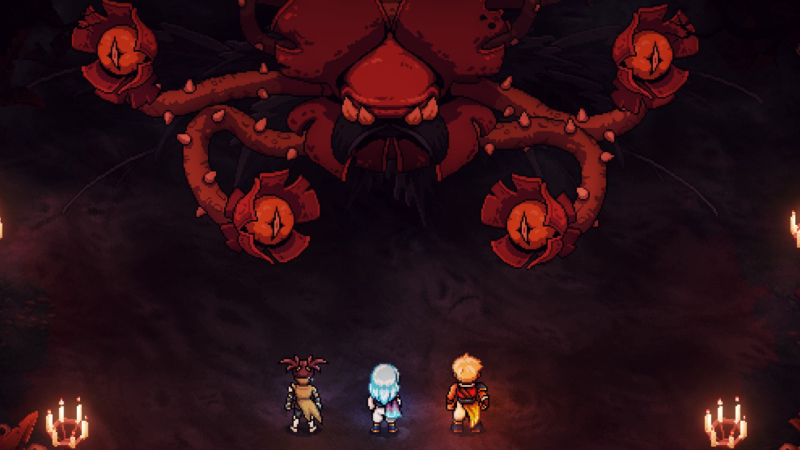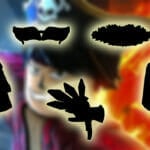Of all the big games that launched this year, imagine my reaction when I found out an indie game surprised me more than any other RPG released in 2023. And why is that? Because Sea of Stars is the whole package. It amazed me how well the developers innovated on a classic genre while maintaining that feeling of familiarity. By adding a dynamic combat system with more player input, and a story with the epicness of any big classic RPG series, Sea of Stars made me feel like I was playing some of my first role-playing games again, albeit with the quality of life features and gameplay I expect in a modern release.
Sea of Stars Review: Modernizing a Beloved Genre

Of all the game genres out there, I believe RPGs to be one of the hardest to make. Since Dragon Quest and Final Fantasy started to create the genre’s staple systems, other games have tried to add their own. This has led to many cases of success, but also failure. And why am I speaking of these franchises when Sabotage Studio’s newest game is marketed as an RPG? Well, because it shares more DNA with a JRPG than an RPG, which can be the same, but the latter is considered more to be the genre’s Western version. Here, Sea of Stars has made something marvelous; it has created a game that takes me back to Super Mario RPG’s gameplay systems with a fun story and memorable characters that remind me of the first games in the genre I ever played.
Story: Total Eclipse of the Land

The story starts with The Archivist, a character that tells us about Valere and Zale, two children destined to become Solstice Warriors. These warriors are the peacekeepers of the land. They travel to stop the Fleshmancer, an evil alchemist. This villain has created horrible monsters called Dwellers, which bring chaos. Only by using the powers of the Sun and Moon magic can the Solstice Warriors create Eclipse Magic to end these horrible creatures. While Sea of Stars‘ story might sound cliché between the big bad guy and the destined heroes; there’s much more to it, and every twist and turn the game threw at me left me craving more.
In true JRPG fashion, you have your party members to accompany you on your adventure. You begin with Valere, the Lunar Monk, and Zale, the Solar Blade Dancer. You can pick either of them as your starting character and switch between them when you set up your camp. After a while, the game’s best character will join you, Garl. He’s the Warrior Cook and a kid who doesn’t have powers. Yet, he’s got the strongest heart of all and is willing to take matters into his own hands. Valere and Zale might be the flashiest, but Garl steals the show. Other party members will join you later on, but we’ll leave those for you to experience for yourself.
The best thing about the story is how it can go from lighthearted to severe, to dark and back again seamlessly. This is something that many games try to do, but few accomplish, yet Sea of Stars does it with a perfect pacing. One of the biggest complaints regarding recent RPGs is how the story goes from an epic fight to a stale moment that kills the vibe. We’ve had this in recent RPGs, and Sea of Stars avoids that. After a big moment, where other games give you this downtime to do chores, Sea of Stars doesn’t stop. As an example, after one of the game’s most emotional moments, you’re thrown into a bigger reveal that doesn’t minimize the previous situation but rather enhances it.
Gameplay: Time Waits for No One

I previously mentioned how Sea of Stars reminded me of Super Mario RPG, and that is due to its gameplay. You might remember timed attacks from said title, and this is something you’ll see a lot in Sea of Stars. If you want to deal more damage, you’ll need to press a specific button at the correct moment. This applies to almost all regular attacks and skills, of which every character has their own. Valere throws a boomerang that gets more hits the more you press the right button. Zale hurls a Fireball that gets bigger the more you hold a button, and so on.
When facing enemies, timing is essential as well. You can reduce the damage you receive by hitting the right button before the enemy lands an attack. This is fun as it turns a static combat mechanic into a more dynamic one. Besides that, you’ll need to watch for enemies’ actions. When the fight begins, each of your three party members attacks unless an enemy has a stopwatch icon above. This icon shows how many actions you can do before the enemy attacks, which makes planning all the more critical.
For the more challenging enemies, there’s a Lock System. You’ll spot blocks above enemies that show their weaknesses. You must break them by hitting each one, or the enemy will launch a powerful attack that’ll sometimes debuff, stun, or take down your party members. Something I noticed about this system is how fun and challenging it gets when surrounded by a variety of enemies; however, while visually impressive, some boss fights lacked a bit of challenge despite having this system.
Lastly, those who want a more leisurely experience can use Relics. These toggleable items can be bought, and they provide specific bonuses. You get two at the beginning of the game to recover all your HP after a fight. During your journey, you’ll find more Relics with perks that make things cheaper or reduce damage, which is a welcome way to make the game even more accessible. Speaking of discovery, backtracking to solve puzzles after unlocking abilities isn’t a slog. The levels are so well-made that they provide shortcuts to open secret areas with combo attacks and even Ultimate skills.
Graphics and Audio: Yasunori Mitsuda Steals the Show

It would be a disservice to do anything but begin by praising Yasunori Mitsuda’s work. Veterans of the genre might remember his work in games like Chrono Trigger and Xenosaga. Besides the story and gameplay of Sea of Stars, the music is one of its best elements. A couple of standout moments include entering a haunted mansion and feeling the eeriness becoming more evident due to the music, or one of the many emotional beats of the game bringing tears to my eyes because the music hit just the right spot at the right moment with its modern take on chiptune-like melodies.
Regarding graphics, this is by far some of the best pixel art I’ve seen. While some might prefer the HD-2D style, I was blown away at every single level’s depth despite not having any 3D whatsoever. Whether you’re climbing, jumping, or swimming, every area is unique due to the fantastic work of the art department. The animation is smooth, and you can see it in all the characters’ skills. And if that wasn’t enough, the art team made some breathtaking 2D cartoon cinematics that play in some of the game’s biggest moments.
One thing the game heavily marketed and truly hits the mark on is its dynamic lighting effects. The game’s lighting is superb, without needing 3D environments or assets. One of my favorite parts was casting Zale’s fireball skill in a dark cave to see how the area lit around him. It might be a small detail, but it is a massive change for games using this style and further shows the team’s commitment to detail.
Sabotage Studio has crafted a world that feels dynamic and vibrant. The fact that you can climb, jump, and swim in this pixelated adventure makes the somewhat linear levels appear massive. Add to this NPCs with interesting dialogues and “Wheels,” the game’s addictive minigame, and you have a recipe for success.
Conclusion: A Game for the Ages

Despite 2023 being a year packed with outstanding releases, Sea of Stars manages to stand out from the competition. Its compelling and versatile story, narrative style that shatters expectations, an enjoyable and memorable cast of characters, some of the best music tracks I’ve heard, and fun turn-based dynamic gameplay make Sea of Stars a must-play. Hopefully, Sabotage Studio sticks to this genre because they nailed every aspect.
Sea of Stars is available now on PS4, PS5, Xbox Series X|S, Nintendo Switch, and PC.
[review]





